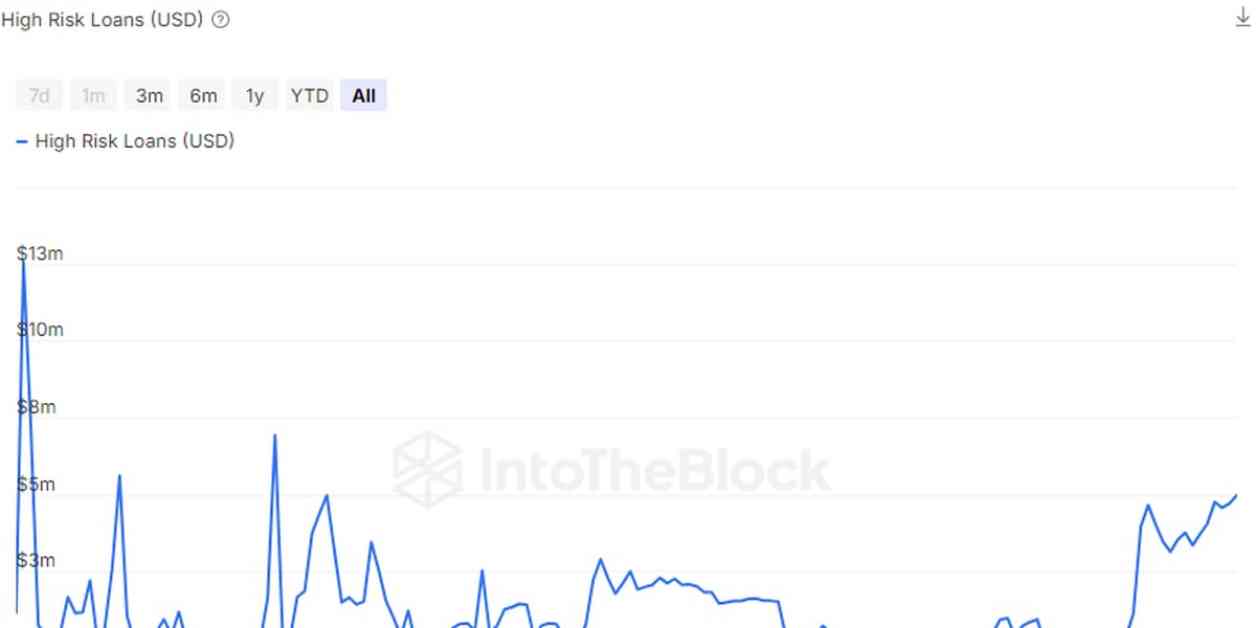The decentralized lending market is currently experiencing a surge in “high-risk” crypto loans, reaching a two-year high of $55 million. This trend is concerning as it may lead to potential liquidation cascades and increased market volatility in the near future.
These high-risk loans are defined as loans that are within 5% of their liquidation price, meaning that if the value of the collateral falls by 5%, it will no longer cover the loan amount and trigger liquidation. Crypto traders often take out loans from decentralized lending platforms by locking in collateral in the form of digital assets, but the risk lies in the possibility of the collateral losing value and leading to debt liquidation.
A liquidation cascade occurs when a series of liquidations happen rapidly, resulting in a downward spiral of crypto prices. This, in turn, can cause further liquidations and heightened market turbulence. The impact of large liquidations can decrease the value of collateral, putting more loans at risk of liquidation and creating a negative feedback loop of price drops.
According to IntoTheBlock, bad debt resulting from these liquidations can have a detrimental effect on market liquidity, making it challenging to execute large orders at stable prices. Lenders may also be hesitant to add new liquidity to prevent potential losses in the face of bad debt.
It is essential for crypto traders and investors to be cautious in the current market environment, as the surge in high-risk loans could potentially lead to increased market instability and volatility. Keeping a close eye on liquidation levels and collateral values is crucial to mitigating risks and protecting investments in the decentralized lending space.














